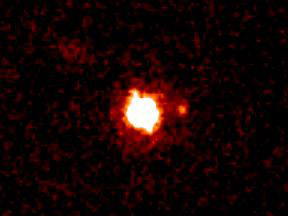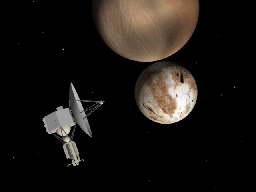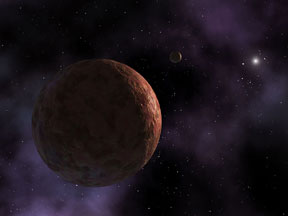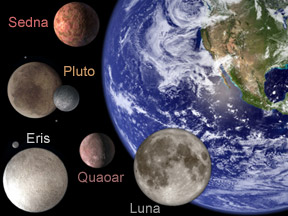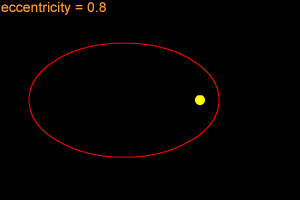Click on image for full size
Image courtesy W. M. Keck Observatory.
Eris - a dwarf planet
Eris is a dwarf planet in our Solar System. Eris was one of the first three objects classified as a dwarf planet, along with Pluto and Ceres. Eris was first spotted in January 2005.
Eris is a large sphere of ice and rock similar to Pluto. It orbits the Sun on the edge of the Solar System. The diameter of Eris is about 2,500 km (1,553 miles). We aren't sure of its exact size because it is so far away and very hard to see, even with the world's biggest telescopes. If it really is 2,500 km across then it is a little larger than Pluto, which has a diameter of 2,390 km (1,490 miles).
Some astronomers called Eris our Solar System's "tenth planet" when it was first discovered. After a lot of discussion, astronomers decided to make up a new category for objects like Eris. That is where the idea of dwarf planets came from.
Eris was discovered by Michael Brown, Chad Trujillo, and David Rabinowitz. When it was first discovered, it was given the temporary name "2003 UB313". Astronomers also called it by the nickname "Xena", after the main character in the TV show "Xena: Warrior Princess".
Eris has a moon named Dysnomia. Before the moon's official name was announced, the moon had a nickname too. It was called "Gabrielle", the name of another character from the TV show.
The orbit of Eris is odd. The orbit is not a circle, so Eris moves closer to and further from the Sun as it goes around. It takes Eris 557 years to go around one time! The orbit of Eris is also tilted... it doesn't move in the same plane that the other planets orbit in.


